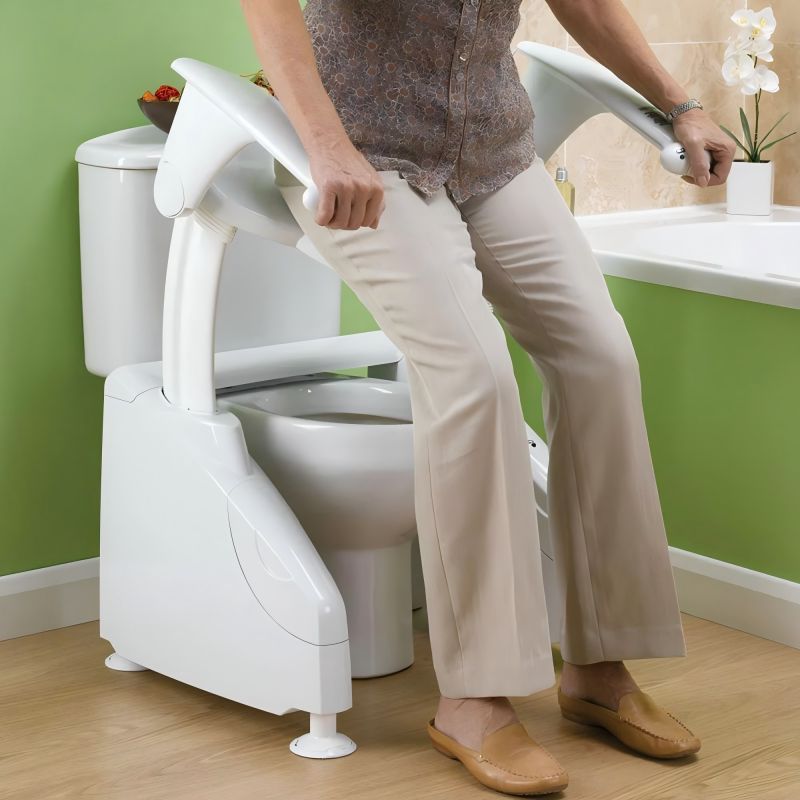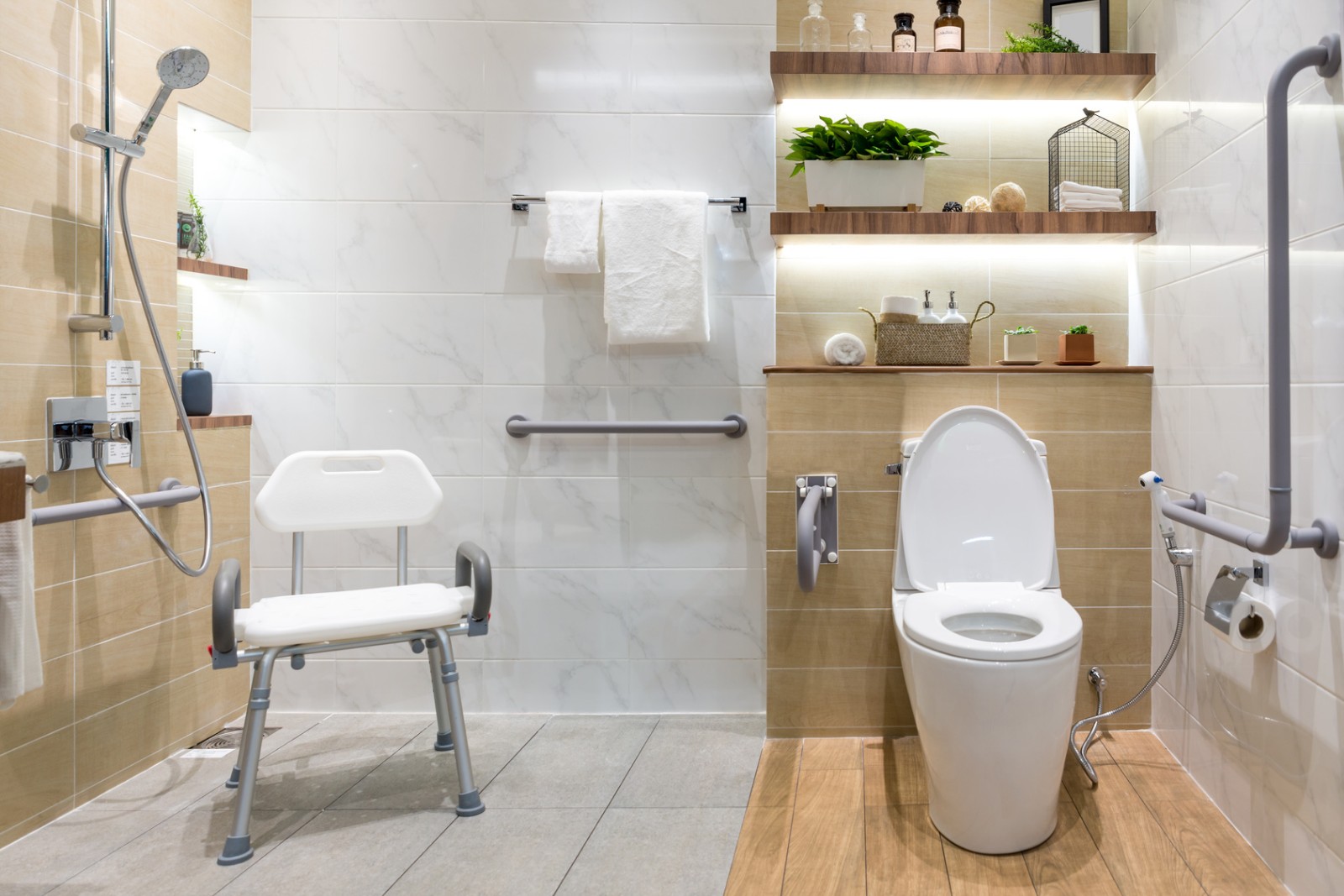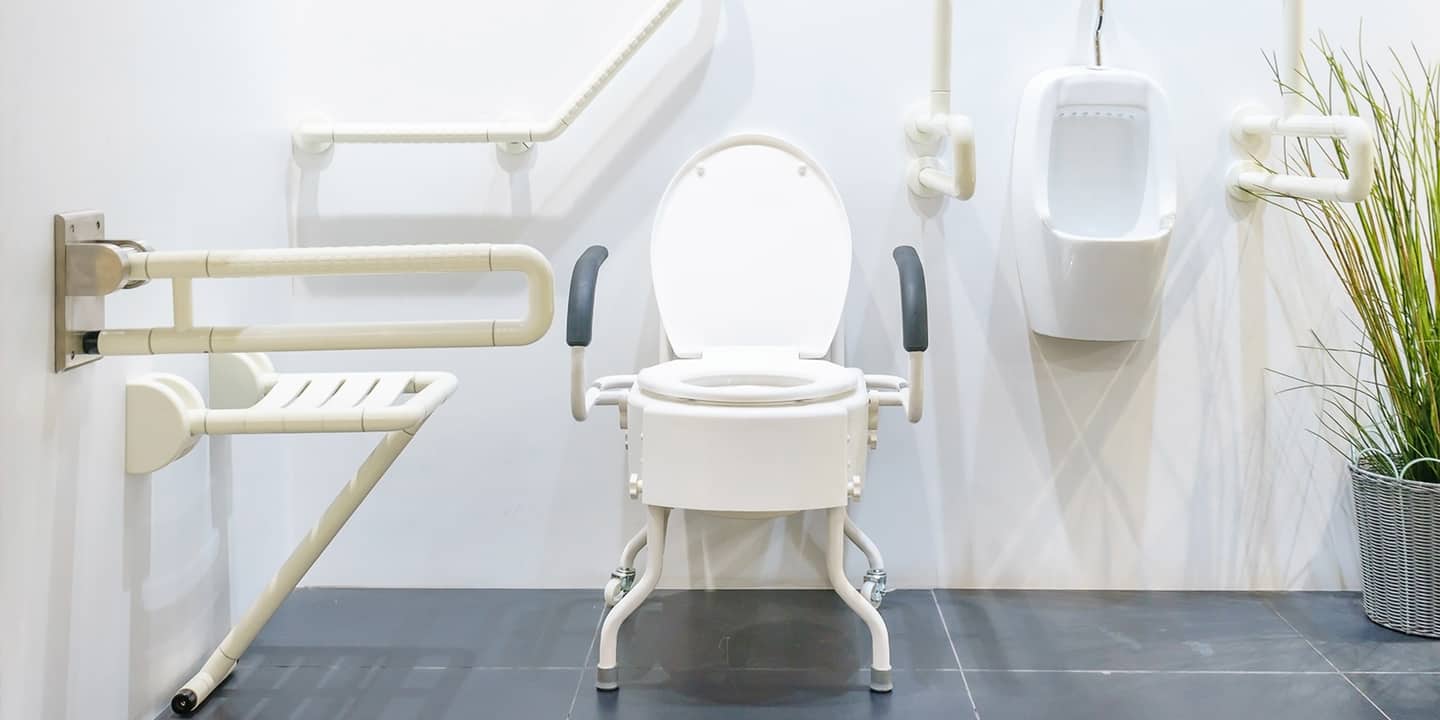
Toilet Help for the Elderly: 10 Tips for Elderly Safety
2024-09-11 15:30

As we age, simple daily activities such as going to the toilet can become more difficult and dangerous. For seniors, the bathroom is a potentially high-risk area. Still, with some simple adjustments and safety measures, you can significantly reduce these risks and make going to the toilet safer and more comfortable.
This article will introduce ten tips to help seniors go to the toilet safely and help them move more freely in the bathroom.
How High Is the Proportion of Elderly People Falling on the Toilet in 2023?
In recent years, the number of elderly people falling on the toilet has been on the rise. According to statistics, in 2023, falls caused by going to the toilet accounted for nearly 30% of all household accidents among the elderly over 65 years old. These accidents often occur in the bathroom, where the elderly are prone to losing balance when going to the toilet due to slippery floors, uncomfortable toilet seat heights, and lack of support points. Such data is shocking and also highlights the need to take safety measures in the bathroom.
What Are the Most Common Types of Mobility Difficulties for the Elderly?
As they age, the mobility of the elderly gradually weakens, which is mainly manifested in the following common types of mobility difficulties:
● Balance problems: As muscle strength decreases and joint flexibility decreases, many elderly people will have balance problems and are prone to losing balance when standing and walking.
● Joint stiffness: Arthritis and other degenerative diseases make the joints stiff when the elderly move, especially when sitting and standing.
● Muscle weakness: Reduced muscle strength makes it difficult for the elderly to stand for a long time or use the toilet when it requires force.
● Vision loss: Vision loss makes it difficult for the elderly to see the surrounding environment clearly in low light conditions, increasing the risk of falling.
● Impact of chronic diseases: Chronic diseases such as diabetes and cardiovascular disease may cause symptoms such as leg weakness and dizziness in the elderly, further affecting their mobility.
Understanding these mobility difficulties is the basis for taking effective safety measures.

Toilet Assistance for the Elderly: 10 Tips for Elderly Safety
Tip 1: Understand your limitations and needs
Every elderly person has a different physical condition, so it is particularly important to choose the right assistive device. First, it is critical to understand your own mobility limitations and needs. For seniors with limited mobility, muscle weakness, or poor balance, it is important to choose the right toilet assistive devices such as raised toilet seats or toilet seats with handrails. These devices can provide additional support to help seniors feel safer when using the toilet.
Tip 2: Increase the height of the toilet seat
For many seniors, standard height toilet seats may be too low, causing them to have difficulty sitting and standing up. Increasing the height of the toilet seat is a simple and effective way to significantly reduce the pressure on the joints of seniors and reduce the discomfort and risks they may feel when using the toilet.
By using a raised seat or changing to a higher toilet seat, it can help seniors sit and stand up more easily, especially those with knee or hip problems. This adjustment does not require much investment, but can greatly improve the comfort and safety of using the toilet.
Tip 3: Add support around the toilet
Installing handrails or support bars around the toilet is another important measure to improve the safety of seniors using the toilet. Handrails can provide a stable support point to help seniors maintain balance when sitting and standing. This is especially important for seniors who have poor balance or lack of upper limb strength.
The installation location of the handrail needs to be determined according to the habits of the elderly and the convenience of use. Generally, the handrail should be installed on both sides of the toilet or close to the wall so that the elderly can easily grasp it. In addition, the height of the handrail should match the length of the elderly's arms to ensure that it can provide the best support effect when in use.
Tip 4: Use non-slip flooring to reduce the chance of slipping
Slippery floors in the bathroom are one of the common causes of falls for the elderly. To reduce the risk of slipping, it is recommended to install non-slip floors or use non-slip floor mats in the bathroom. Non-slip floor materials usually have a high coefficient of friction and can provide better grip in slippery environments.
In addition, check the status of the floor mat regularly to ensure that it is not worn or curled, as these may become new tripping hazards. Keeping the floor dry is also a key step in reducing slips. Using absorbent floor mats and drying the floor in time after bathing can effectively reduce the probability of accidents.
Tip 5: Improve the lighting in the bathroom
Good lighting is essential for the elderly to use the toilet safely. Many elderly people have impaired vision, especially in low-light environments, which can easily lead to mistakes or falls. To avoid this problem, it is very important to ensure that the bathroom has adequate lighting.
It is recommended to install high-brightness LED lights and try to avoid using dim bulbs. In addition, consider installing a night light near the toilet so that you don't have to walk in the dark when going to the toilet at night. This not only increases the sense of security of the elderly, but also reduces the risk of them falling in the dark.

Tip 6: Use the support of a walker
For the elderly who are extremely inconvenient to move or need additional support, a walker is a very useful auxiliary tool. The walker not only helps them maintain balance when walking, but also provides additional support when going to the toilet.
When using a walker to go to the toilet, it can be placed next to the toilet. The elderly can maintain balance by holding the armrests of the walker and sit or stand up safely. Some specially designed walkers even come with a portable toilet seat, which is very suitable for use at home, further improving the convenience and safety of going to the toilet.
Tip 7: Invest in toilet accessories for the elderly
There are many toilet accessories designed for the elderly on the market, which can greatly improve the safety and comfort of going to the toilet. For example, a raised toilet seat, toilet armrests, and even a smart toilet lid with warm water flushing function can be selected according to the needs of the elderly.
Investing in these accessories is not only about improving your quality of life, they are also effective measures to prevent accidents when using the toilet. Although these devices may require some additional expenses, they are worth the long-term investment compared to the medical expenses caused by falls.
Tip 8: Move slowly and carefully
When using the toilet, the elderly should keep their movements slow and cautious, and avoid sudden and fast movements. Whether sitting or standing, they should stabilize their body center of gravity and ensure balance before taking the next step. Especially when standing up, make sure that the leg strength is sufficient to support the body before standing up slowly.
In addition, the elderly should also avoid unnecessary movements when using the toilet, such as turning suddenly or reaching for distant objects. These unnecessary movements may disrupt the body's balance and increase the risk of falling.
Tip 9: Know when you can't use the toilet independently
Although everyone wants to maintain independence, sometimes being aware of your limitations is the best way to prevent accidents. If the elderly feel dizzy, weak, or have weak legs and feet, they should seek help from others as soon as possible instead of forcing themselves to use the toilet alone. Anticipating whether you have enough strength and stability to complete the toilet action is the key to ensuring safety.
Family members or caregivers can help the elderly develop this anticipatory awareness and provide assistance when necessary. This assistance can not only avoid potential dangers, but also make the elderly feel more at ease.
Tip 10: Exercise regularly to increase activity levels
Although the physical functions of the elderly will inevitably deteriorate with age, regular physical exercise can effectively maintain or improve their mobility. In particular, leg and core muscle exercises can help improve balance and strength, making it more comfortable to use the toilet.
Some simple exercises such as walking, leg raising, and balance training can help the elderly increase their physical strength and reduce the risk of falling. In addition, moderate exercise can also help maintain joint flexibility and reduce the symptoms of joint stiffness.

How to Sit on the Toilet Safely?
When the elderly go to the toilet, it is very important to sit in the right way. Here are some steps to sit safely:
1. Position the toilet first: Before sitting down, make sure you are facing the toilet and at a suitable distance. Use handrails or walkers to stabilize your body.
2. Slowly lower your body: When lowering your body, hold the handrail or walker with one hand and place the other hand on your thigh to help control the speed of your body's descent. Keep your back straight and sit down slowly.
3. Confirm your balance before sitting down: Don't rush to sit down completely, confirm your balance first, and then put your full weight on the toilet.
How to Stand Up From the Toilet Safely?
Standing up from the toilet is also a process that requires attention. Here are the steps to stand up safely:
1. Prepare to stand: Before standing, make sure your feet are firmly on the ground and slightly apart to maintain balance. Hold the handrail or walker with both hands.
2. Stand up slowly: Use the strength of your legs and arms to stand up slowly and ensure smooth movements. Don't use sudden force to avoid losing your balance.
3. Stand firm before moving: After standing up, keep your balance first, and then start moving. If you feel unstable, you can stay for a while before taking a step.
Summary of 10 Tips for Elderly Safety
1. Understand your limitations and needs
2. Raise the height of the toilet seat
3. Add support around the toilet
4. Use non-slip flooring to reduce the chance of slipping
5. Improve the lighting in the bathroom
6. Use the support of a walker
7. Invest in bathroom accessories
8. Move slowly and carefully
9. Understand when you can't use the toilet independently
10. Exercise regularly to increase activity levels
The safety of the elderly when using the toilet is not only related to their daily quality of life, but also to their health and safety. With the above ten tips, the elderly can better ensure their safety in the bathroom, thereby reducing the risk of accidents during toileting. Whether it is increasing the height of the toilet seat, installing handrails, or exercising regularly to increase activity levels, these measures can effectively help the elderly use the toilet safely. After all, a safe and comfortable living environment is the basic guarantee for the elderly to enjoy their later years.








